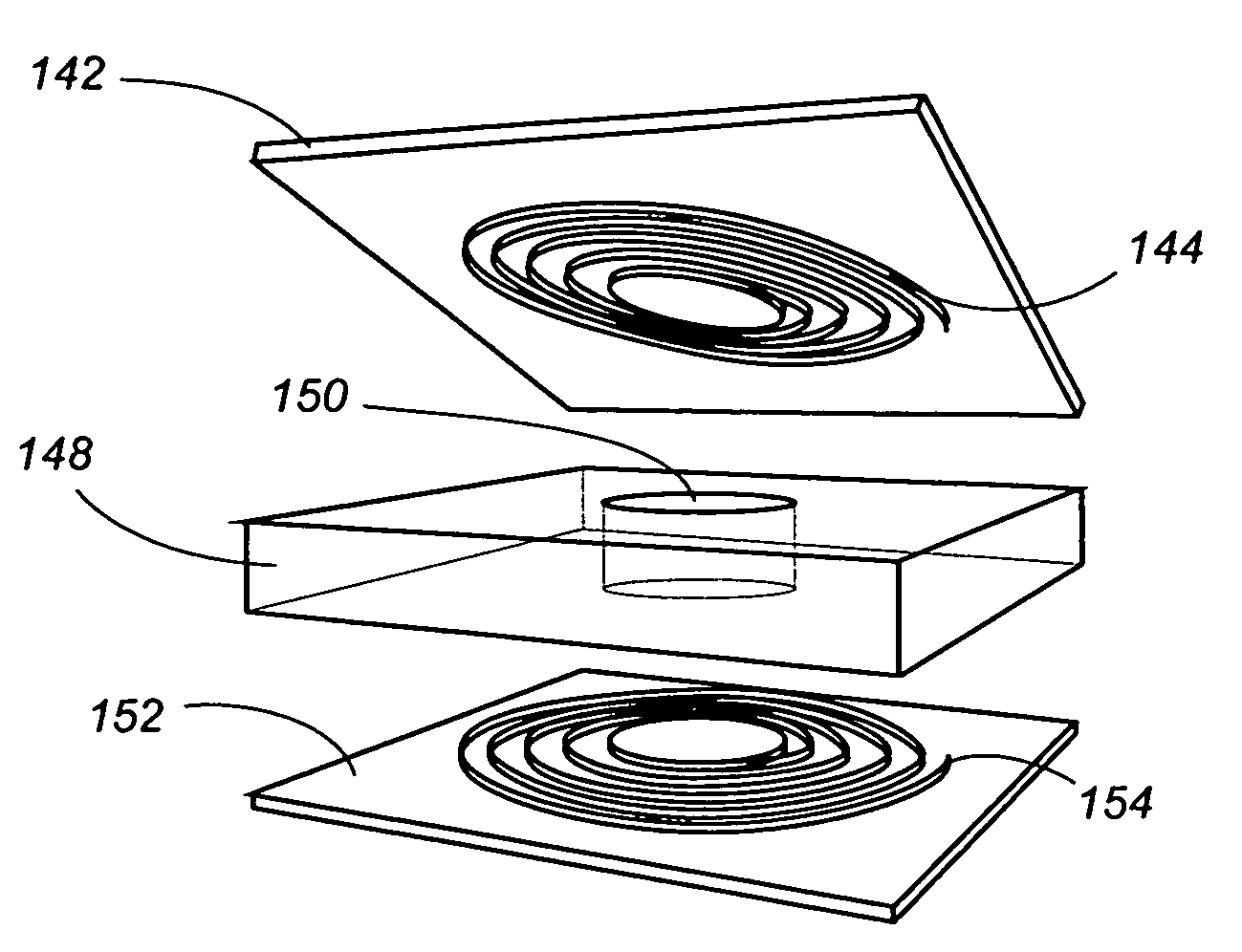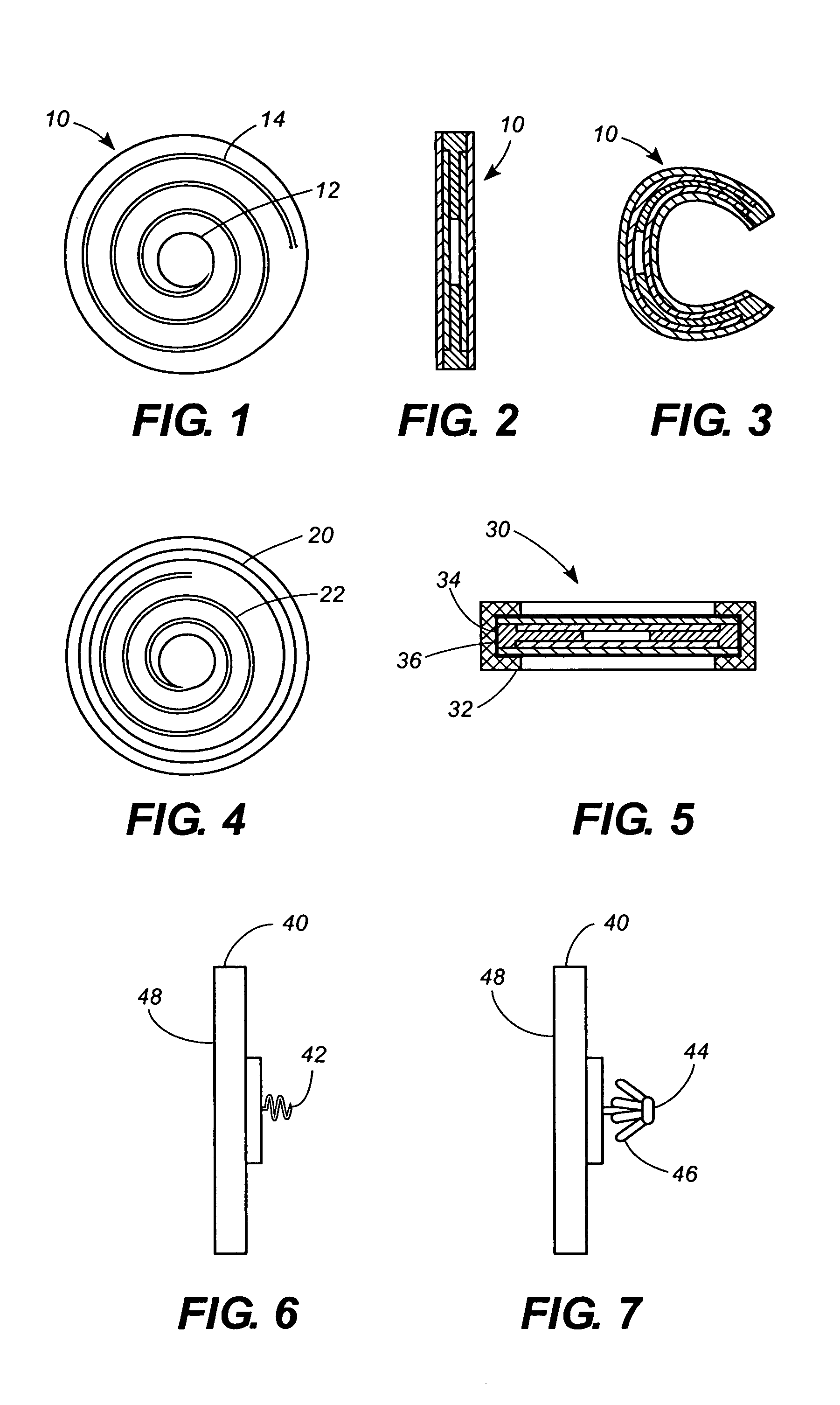High Q factor sensor
a high-q factor, sensor technology, applied in the field ofchronically implanted sensors, can solve the problems of inability to use simple diagnostic or chronic measurement, measurement error, invasive surgery and patient immobilization, etc., and achieve the effect of simple monitoring method, easy measurement of pressure, safe and accurate disclosure, and simple monitoring method
- Summary
- Abstract
- Description
- Claims
- Application Information
AI Technical Summary
Benefits of technology
Problems solved by technology
Method used
Image
Examples
Embodiment Construction
[0065]The invention can perhaps be better understood by referring to the drawings. One embodiment of a sensor according to the invention is shown in FIGS. 1, 2, and 3, where a disc-shaped sensor 10 comprises a capacitor disk 12 and a wire spiral 14. FIG. 2 is a lateral view of sensor 10, and FIG. 3 is a lateral view of sensor 10 in a folded configuration for insertion. The fact that sensor 10 is sufficiently flexible to be folded as shown in FIG. 4 is an important aspect of the invention.
[0066]In FIG. 4 a ring 20 comprised of a shape memory alloy such as nitinol has been attached to, for example, with adhesive, or incorporated into, for example, layered within, a sensor 22.
[0067]FIG. 5 is a lateral cross-sectional view of a circular sensor 30 having a ring 32 comprised of a shape memory alloy such as nitinol encompassing the outer edge 34 of sensor 30. Ring 32 preferably is attached to outer edge 34 by a suitable physiologically acceptable adhesive 36, such as an appropriate epoxy o...
PUM
 Login to View More
Login to View More Abstract
Description
Claims
Application Information
 Login to View More
Login to View More - R&D
- Intellectual Property
- Life Sciences
- Materials
- Tech Scout
- Unparalleled Data Quality
- Higher Quality Content
- 60% Fewer Hallucinations
Browse by: Latest US Patents, China's latest patents, Technical Efficacy Thesaurus, Application Domain, Technology Topic, Popular Technical Reports.
© 2025 PatSnap. All rights reserved.Legal|Privacy policy|Modern Slavery Act Transparency Statement|Sitemap|About US| Contact US: help@patsnap.com



